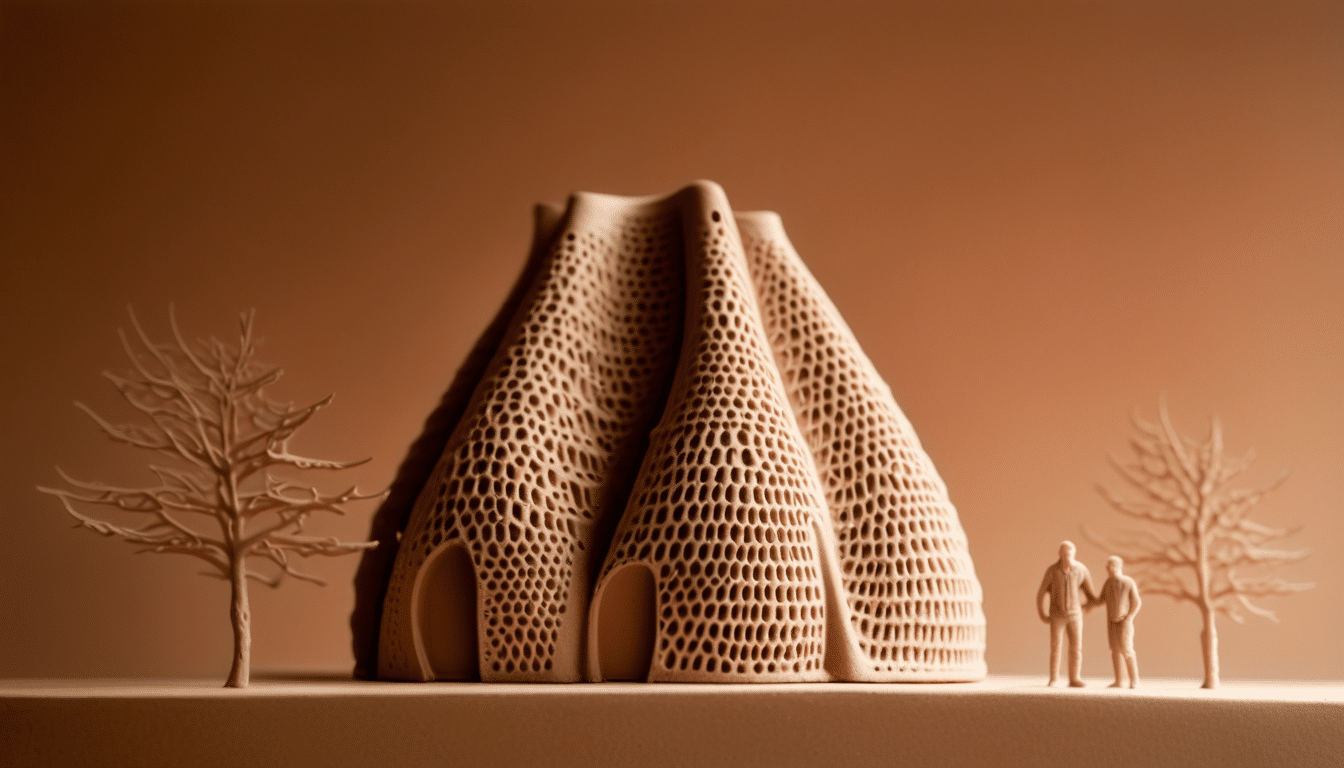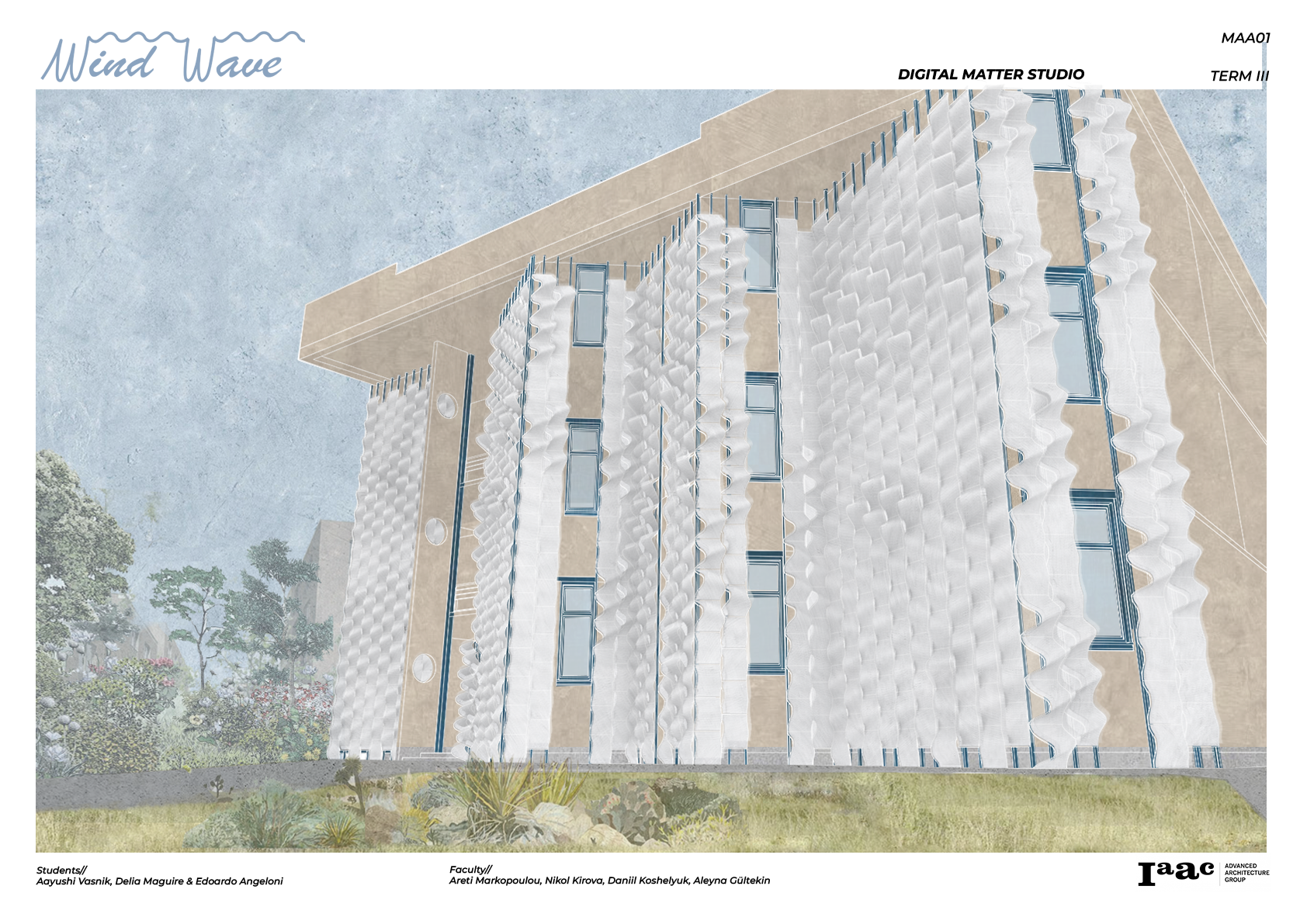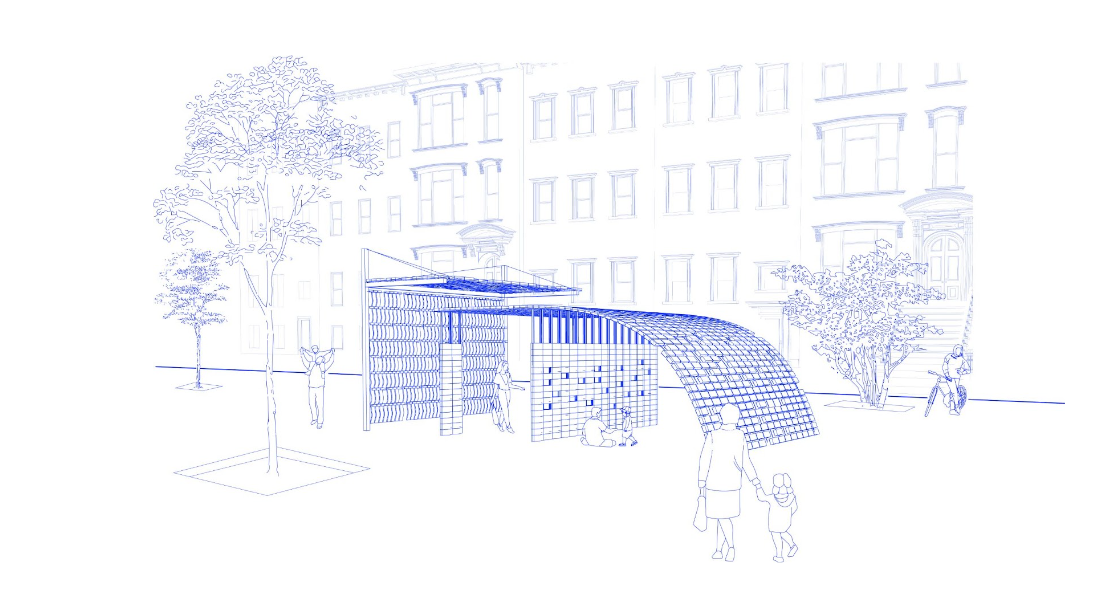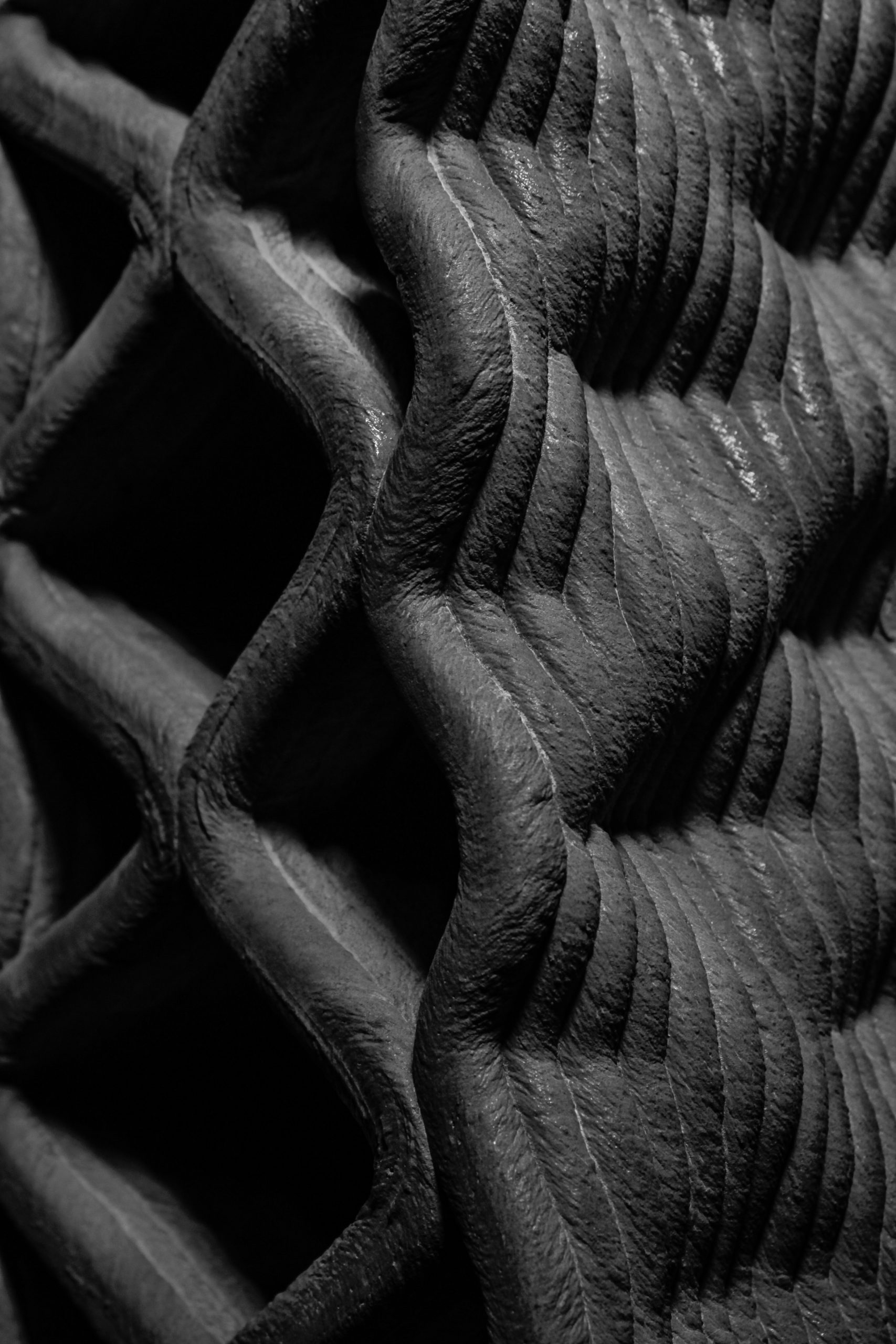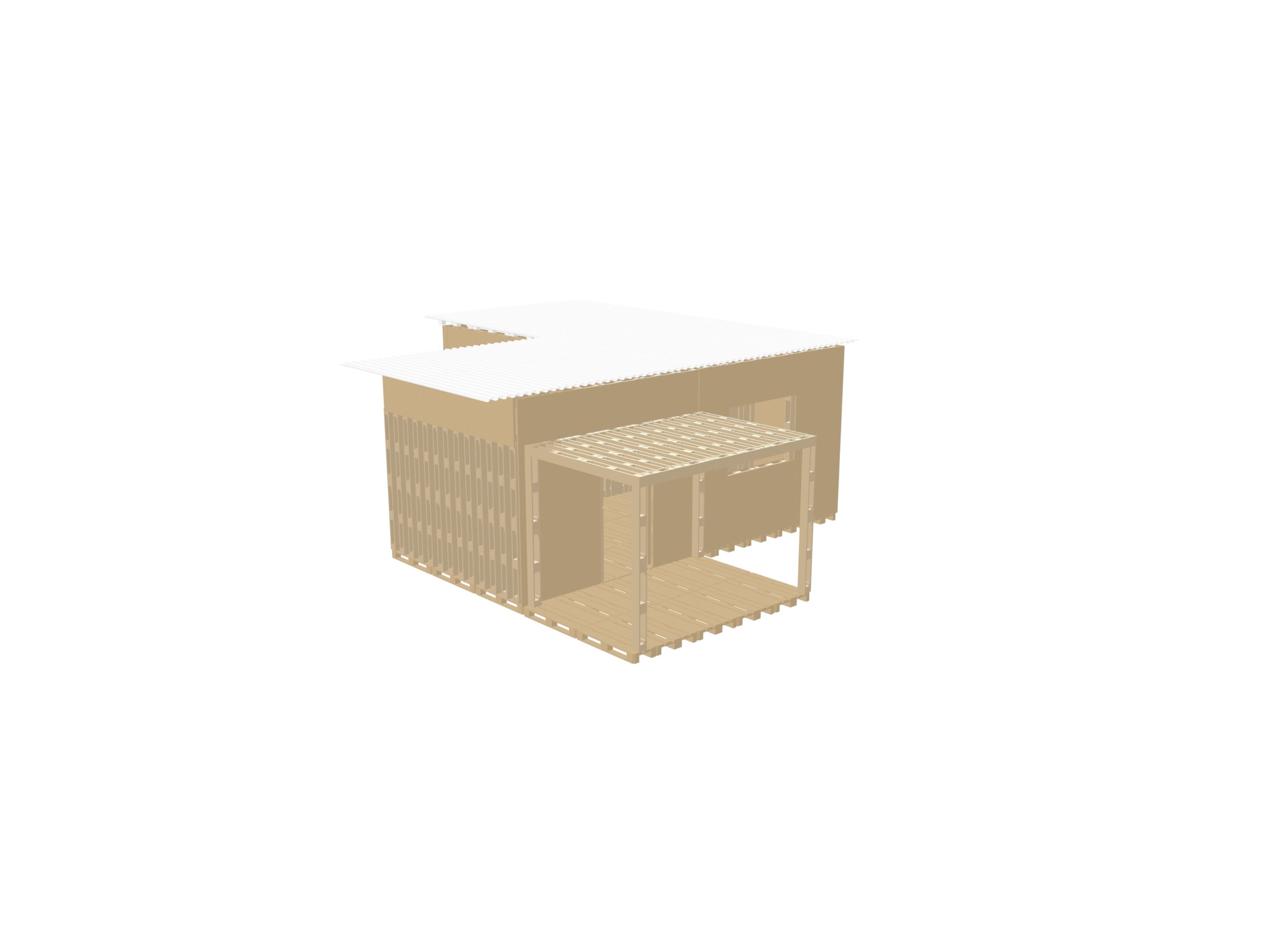Today, we are facing a change in paradigm in the field of Architecture. Information Era Technologies and their impacts on architecture are drastically changing, and their relationship calls for new or adapted concepts, where physical space seamlessly intertwines with digital content, and where the language of electronic connections tie in with that of physical connections.
We are consequently moving towards a different form of “habitats”, where architecture is not merely inhabited, but becomes technologically integrated, interactive and evolutionary. If computers were once the size of buildings, buildings are now becoming computers, both in a performative sense, on I/O Communication protocols, and in a programmable sense, at material molecule nanoscale; even becoming operational thanks to self-learning genetic algorithms.
The key, thus, to 21st century challenges generated by global urbanization, economic instability and particularly the increasing awareness related to the environmental crisis will be the development of high efficient “products’ with increasing levels of functionality. Architecture following every stage of life will have to address and respond to both challenges and advancements. Our buildings and cities will need new interfaces to communicate with the environment and embedded systems of performance that do not rely on existing urba infrastructures. Active and bio-materials will play a critical role in this development, forcing architects to get free from mechanical actuators or computing devices and integrate into their designs the inherited functions that “smart materials” present on a molecular scale.
Syllabus
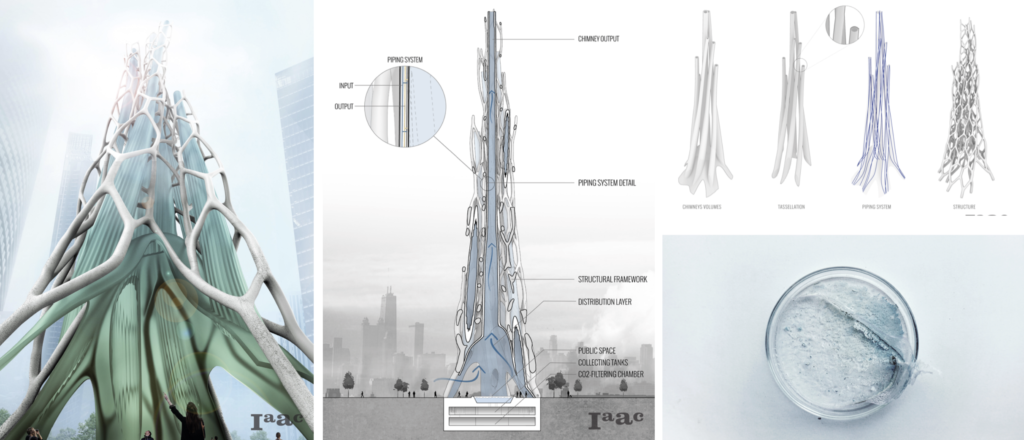
Credits: CO2 filtering tower, Digital Matter, MAA01 2018/19
Undoubtedly, the building industry accounts for an overwhelming part of the dire effects that produce climate change and the current global warming crisis. In practice much of this effect is due to resource extraction of prime materials as well as to anachronic design strategies which range from designing with unsustainable materials to the massification of building components that are one-use only. Contributing to this effect is a lack of information and accountability in the design process: Architects often make design decisions without being fully informed about the impact of their choices.
In contrast, as put into evidence by the current environmental, health or social crisis, buildings nowadays must have an adaptable capacity to change use, scope and even form, disrupting previous conceptions of the time-span of constructions and provoking daring challenges for adaptive architecture, design for reassembly and providing a smart repurpose of one-life materials that would otherwise go to waste.
While on one hand we need to build more to respond to the current challenges of population growth, on the other, we need to do so in a way that building embodied carbon is minimised and material extraction is limited. To answer this challenge, Digital Matter puts forward a manifesto towards operating with an abundance mindset rather than from a place of scarcity. This is a new paradigm, especially relevant in the practices related to the design and production of the built environment, since it expands the definition of “resources” and where resources, raw and non-raw materials can be found and “mined”. If, as agents, involved in the design, planning and construction process, we could shift the attention to the Anthroposphere as a source of, rather than just a destination for, processed goods, then we might have the potential to disrupt linear patterns of design and enhance circularity in cities and the built environment.
Starting from allocating problems and opportunities in the local context, students will aim to identify potential resources that can be upcycled into performative and adaptive building components for different architectural features. Students will dive deep into analysing material opportunities that are embedded into the fabrication process, creating a coherent and informed narrative of the building life-span while using advanced computation techniques and digital fabrication in order to establish workflows to design more sustainable and contextualised buildings.
Rather than creating buildings that are static, consuming and contaminating, the Digital Matter Materializing Circular Design Agenda 2022-23 will develop novel material, design and manufacturing solutions for adaptive buildings that are able to change state and shape, generate resources, minimise negative environmental impact and achieve complexity and high aesthetics through performances that resemble biological and natural organism’s operation.
The design studio researches the implementation of computed, active or zero emissions material systems coupled with responsive technologies for the creation of dynamic built spaces that respond, breath, filter, biodegrade, or feed the soil and eventually change shape and state.
The final goal is to develop design, material and manufacturing systems that aim to close or limit material and resource loss, while having the potential to minimise waste, using it as a resource in itself.

Credits: Design for Reassembly in Circular Buildings, Digital Matter, MAA01 2018/19
Students will be physically prototyping and computationally designing architectural proposals that are driven by principles of performance, upcycling, decarbonisation and design for reassembly:
Novel material and performative prototypes of Buildings, Skins and Structures that are able to close material and resource loops will be the outcome of the final projects.
Advanced Computational design for digitising material performance and origin, simulating structural tectonics and thermodynamics or analysing big data of performance with Artificial Intelligence will be the tools to Materialise Circular Design.
Digital fabrication with a focus on modular/discrete elements, robotics and additive manufacturing will be explored for the construction and prototyping of the novel circular designed for re-assembly building systems.

Credits: Water Upcycle and water filtering towers in neighbourhoods, Digital Matter, MAA01 2019/20
The [DM] method of investigation follows a rigorously experimental approach and progresses in complexity from small-scale material sampling to the production of 1:1 scale architectural components and prototypes.
Learning Objectives
At course completion the student will:
- Understand material-driven design methodology and apply it in a circular design context;
- Identify potential resources and develop material systems suited for the building applications;
- Dive deep into analysing material opportunities that are embedded into the fabrication process, creating a coherent and informed narrative of the material life-span while using advanced computational techniques and digital fabrication;
- Establish workflows to design more sustainable and contextualised buildings;
- Develop physical prototypes and demonstrators of the system in 1:1 scale.

Credits: Design for Decarbonisation with Robotic Fabrication, Digital Matter, MAA01 2020/21 & 2021/22
Faculty
Projects from this course
WindWave
The project is a two part system utilizing humidity absorption and wind capture to passively cool a building. The system incorporates salt-loaded hydrogels within a clay casing to capture and store moisture, facilitating gradual cooling through evaporation and wind flow.
FRICKS: CDW Bricks Foamed Geopolymer
BLOCK HOUSE
Agro Char
The AGROCHAR project introduces a revolutionary architectural system that combines sustainability, versatility, and carbon capture. By harnessing the power of biochar, an agricultural waste product with carbon-negative properties, AGROCHAR minimizes environmental impact while contributing to decarbonization efforts. The system’s topological interlocking assembly method, supported by post- tensioning techniques, redefines traditional structural configurations, enabling efficient and … Read more
FORM FOLLOWS AVAILABILITY
“Waste does not exist—products are designed and optimized for a cycle of disassembly and reuse.“ _Ellen MacArthur Foundation The construction industry is the number one consumer of global raw materials while being one of the biggest producers of waste in the European Union.In this Research, we aim to explore the possibilities of secondary waste wood … Read more
BLOCK HOUSE
BREATHING CARBON
A SYSTEM FOR URBAN DECARBONIZATION Breathing Carbon emerges as a response to the pressing need for sustainable urban infrastructure that addresses climate change and promotes ecological resilience. By integrating biochar, a carbon-rich material derived from biomass waste, into the concrete mixture, we aim to harness its carbon sequestration properties, thus contributing to global efforts in … Read more
FROM WASTE TO TAP
REIMAGINING WATER TREATMENT INFRASTRUCTURE THROUGH BIO-BASED SOLUTIONS PROJECT OVERVIEW WATER STRESS Due to the climate change, inefficient irrigation systems for agriculture, population growth and inefficient water infrastructure, the water stress in the world is increasing. But we question ourselves if water is really a scarce resource or is it just the issue of how the … Read more
Re-clay(m)
The old builds the new Manifest Can we transform construction waste? Can brick waste be a potential upcycled material in an structurally optimized system? Two main factors, the huge amount of CDW and the importance of brick production in Spain, gives us the decision to select our material, the brick waste. We attempt to propose optimized solutions … Read more
Form Follows Availability
The construction industry is the number one consumer of global raw materials while being one of the biggest producers of waste in the European Union.In this Research, we aim to explore the possibilities of secondary waste wood (Pallets) based on the notion of discreteness and develop a “Programmable Matter System”.These discrete building blocks can be … Read more
Char-Crete
We live in a world with challenges from climate change and resource scarcity, to population growth and economic instability. This project aims to propose a design using nature based solutions, as biochar with agriculture base. The building becomes a zero-carbon emission system in the suburbs, where agriculture is mainly productive. The project strives to be … Read more



